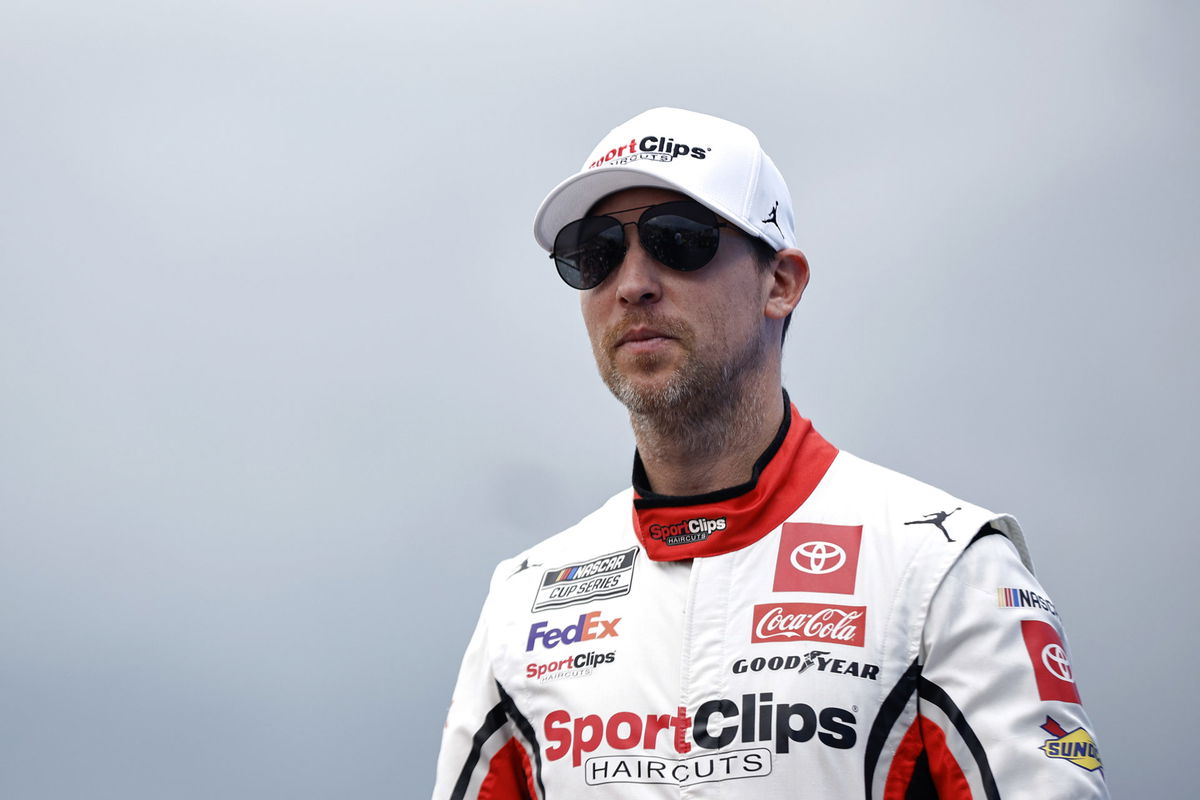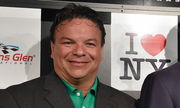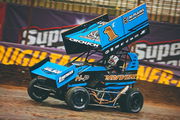
Getty
WATKINS GLEN, NEW YORK – AUGUST 21: Denny Hamlin, driver of the #11 Sport Clips Haircuts Toyota, walks onstage during driver intros prior to the NASCAR Cup Series Go Bowling at The Glen at Watkins Glen International on August 21, 2022 in Watkins Glen, New York. (Photo by Sean Gardner/Getty Images)

Getty
WATKINS GLEN, NEW YORK – AUGUST 21: Denny Hamlin, driver of the #11 Sport Clips Haircuts Toyota, walks onstage during driver intros prior to the NASCAR Cup Series Go Bowling at The Glen at Watkins Glen International on August 21, 2022 in Watkins Glen, New York. (Photo by Sean Gardner/Getty Images)
Sunday’s Cup Series playoff race at Martinsville lacked crucial factors. NASCAR’s shortest track on its schedule promised some bustling stock-car action, mostly due to the high stakes. With two spots open for taking and the championship race in Phoenix up next, the sense of urgency was not merely superficial. Some of the big guns in the competition, like Denny Hamlin and Martin Truex Jr., also bowed out of the series
Watch What’s Trending Now!
There was another major factor behind a lackluster race with minimal action. The organization responsible for it is tire partner Goodyear, NASCAR’s primary tire manufacturer for a long time. But according to Denny Hamlin, Goodyear’s latest experiment at Martinsville has turned out to be a failure. To worsen things, drivers have experienced aspects of the Next-Gen car that need to run better on short tracks.
ADVERTISEMENT
Denny Hamlin explains the shortcomings of Goodyear
The Martinsville concrete track is porous. Pores allow the intrusion of substances into the track by giving them space. During the race, friction heats the tires, and that melts the rubber tires. The same melted rubber or the scraps that are removed from the tire settle in these pores on the track. This makes the track smoother and reduces tire wear.
Throughout the first two stages of the race, passing other cars was extremely difficult, a result of the reduced tire wear that was also initiated due to the presence of pores on the track. Denny Hamlin put this exact issue in the spotlight in the latest episode of his podcast, Action Detrimental. As he explained,
“Once the rubber got laid down on the track, it stopped tire wear. This is where Goodyear’s gotta get out of their comfort zone and get really aggressive. Build a tire we will wear out and then we will pit. We won’t blow the tires. We’ll just wear them out if we abuse them.”
ADVERTISEMENT
ADVERTISEMENT
Denny Hamlin also noted that the tires took around 150 laps to begin wearing out. In turn, the drivers had to acclimate to the reduced traction and, as a result, ran at the same speed for an elongated period. Describing his experience during the race with the smooth tires, Denny then stated, “I got stuck behind the #17 for 60-70 laps. Eventually, I burned my stuff trying to get around him. #12 passes me, and once #12 passes him, he clears out, he goes. Once I pass the #17, I start going forward.”
READ MORE: Kyle Busch’s unexpected turn and Dale Jr’s take
ADVERTISEMENT
At the same time, he appreciated Goodyear’s effort to add a new dimension to the race, although it turned out to be detrimental to the drivers. He said, “I appreciate the effort. They brought a new tire. They kept the construction the same, the compound the same but the thickness of the tire tire itself caused more heat. What they were hoping is that it would cause more wear because when you have heat you have wear.”
Top Stories
Greg Biffle’s $4M Worth Prized Possession Still Without a Buyer Leaves NASCAR Fans Heartbroken

NASCAR World Mourns as Former Watkins Glen President Michael Printup Passes Away at 60

Fox Broadcaster Pens Heartfelt Message as Veteran Announcer Quits NASCAR

Denny Hamlin Offers First Words Since Losing Beloved Father in Anniversary Fire

“This Is Not Racing”: Growing Outrage Erupts Over How Kids Are Being Taught to Win at Any Cost in Modern Motorsports

Can Goodyear create a tire that wears out on smooth tracks?
The process of making a tire that will wear out on smooth and porous tracks is quite long. Denny Hamlin explains that the grip-to-horsepower ratio is crucial in Next-Gen cars. If the cars do not generate enough horsepower and torque to wear out tires, another solution is to slide the tires across corners to heat and burn them out.
ADVERTISEMENT
“Goodyear has to get way out of their comfort zone and build something that wears out,” claimed Hamlin. ”I saw Rodney Childers put on left-side tires for the last time with 200 and some to go. That is bananas. We used to go 15 laps in practice in Martinsville and wear out the left-rear tire.”
Gravitating on the topic that NASCAR has been looking at since its inception, Denny Hamlin then highlighted that Goodyear was going to be the primary tire manufacturer for a while now. That implies that they need to improvise, and they have ample time on their hands for it as well.
“I still believe Goodyear has a big role in what we see on a weekly basis. I appreciate the change for them, taking the risk, bringing the tire. It’s not really a risk what they brought, but you got to get more aggressive. You have to get more aggressive if you want to help fix the racing product.”
ADVERTISEMENT
“We’ve continued to cut horsepower. The grip on the car at short tracks is a byproduct of having wider tires and less horsepower. In a cost cutting measure we’ve continued to cut horsepower, which has led to shifting … and has made the racing bad.” pic.twitter.com/j8FOrtlOm0
— Matt Weaver (@MattWeaverRA) October 5, 2023
Speaking on the minimal number of wrecks bar the one wreck by Ty Gibbs, which collected multiple cars on the field and in turn ruined Hamlin’s all-important chance to take the lead, he then added,
“We can’t even get close enough to each other to wreck. We got to have a variance of speed in the cars to create these exciting moments. I sat behind a car that was half a second slower than me for 25 laps and could not pass him. You have to create lap-time variance through different compounds or just a tire that wears out in general.”
ADVERTISEMENT
A curious Jarred Allen then asked if there was a chance that Goodyear might overwork the tires and the tire would start wearing out almost instantly. Hamlin answered calmly, “As soon as the tire would wear out to be bald, we would come pit. We would never blow a tire. It would lose so much grip that you continue to stay out there and be really slow.”
WATCH THIS STORY – “Wreck the Shit Out”: Bubba Wallace’s Spotter Dissects Richard Childress’s Ousted Driver’s “Stupid” Move
From the looks of it, Denny Hamlin must have had a deep analysis of his performance after an unfortunate elimination at Martinsville. From the role of tires to the inability of Next-Gen cars, he didn’t leave a stone unturned in his efforts.
ADVERTISEMENT
ADVERTISEMENT
ADVERTISEMENT
ADVERTISEMENT

